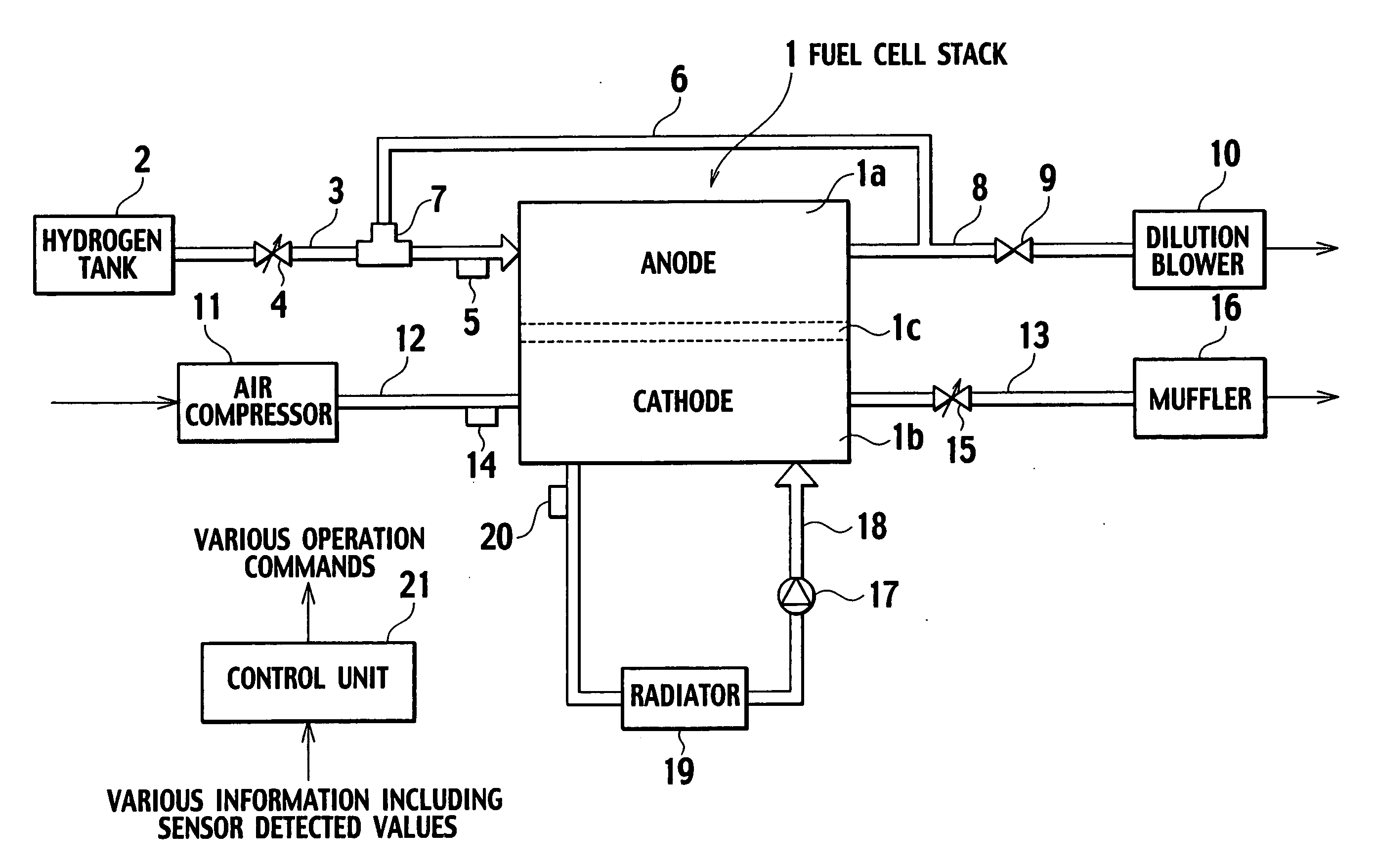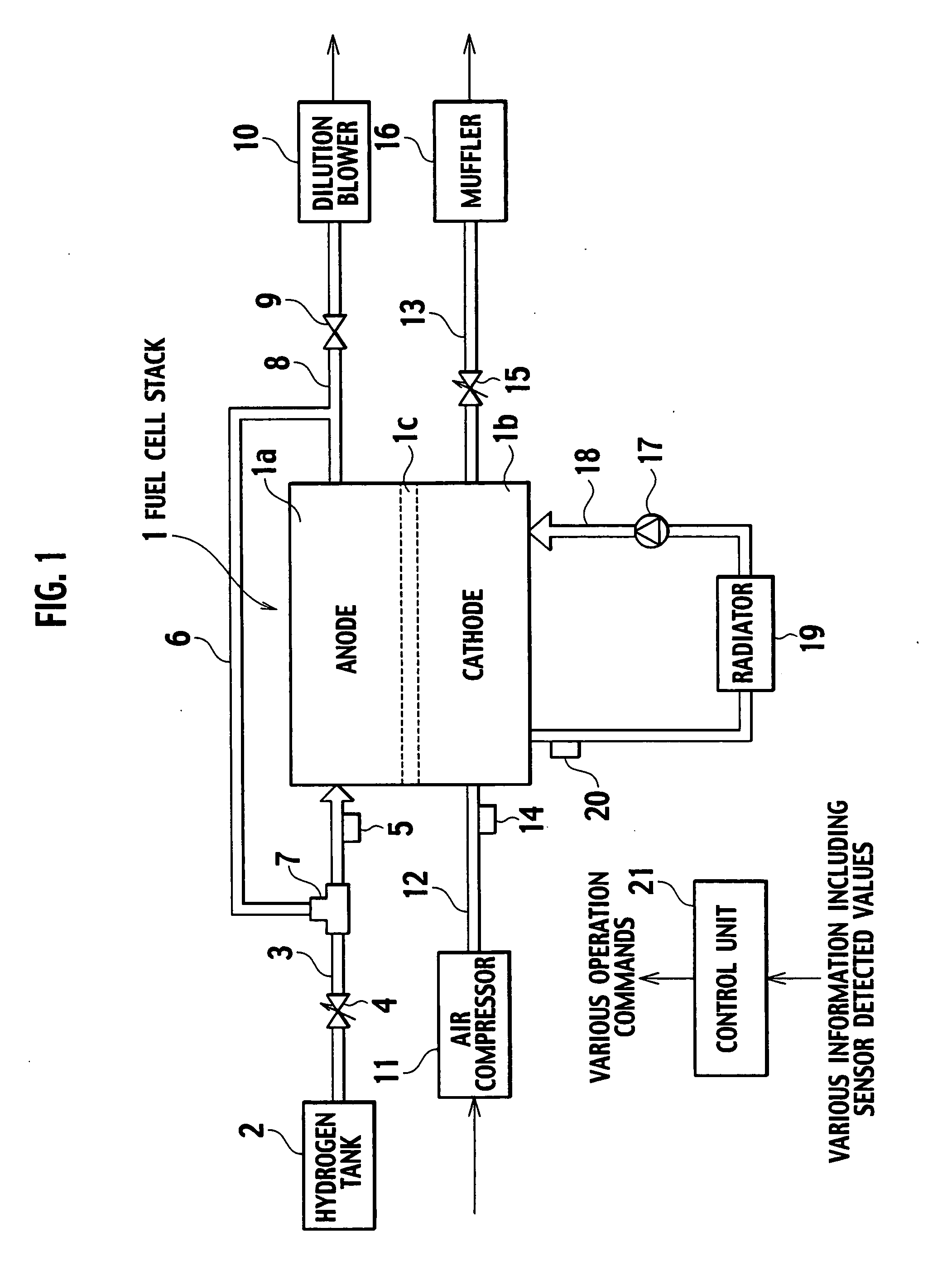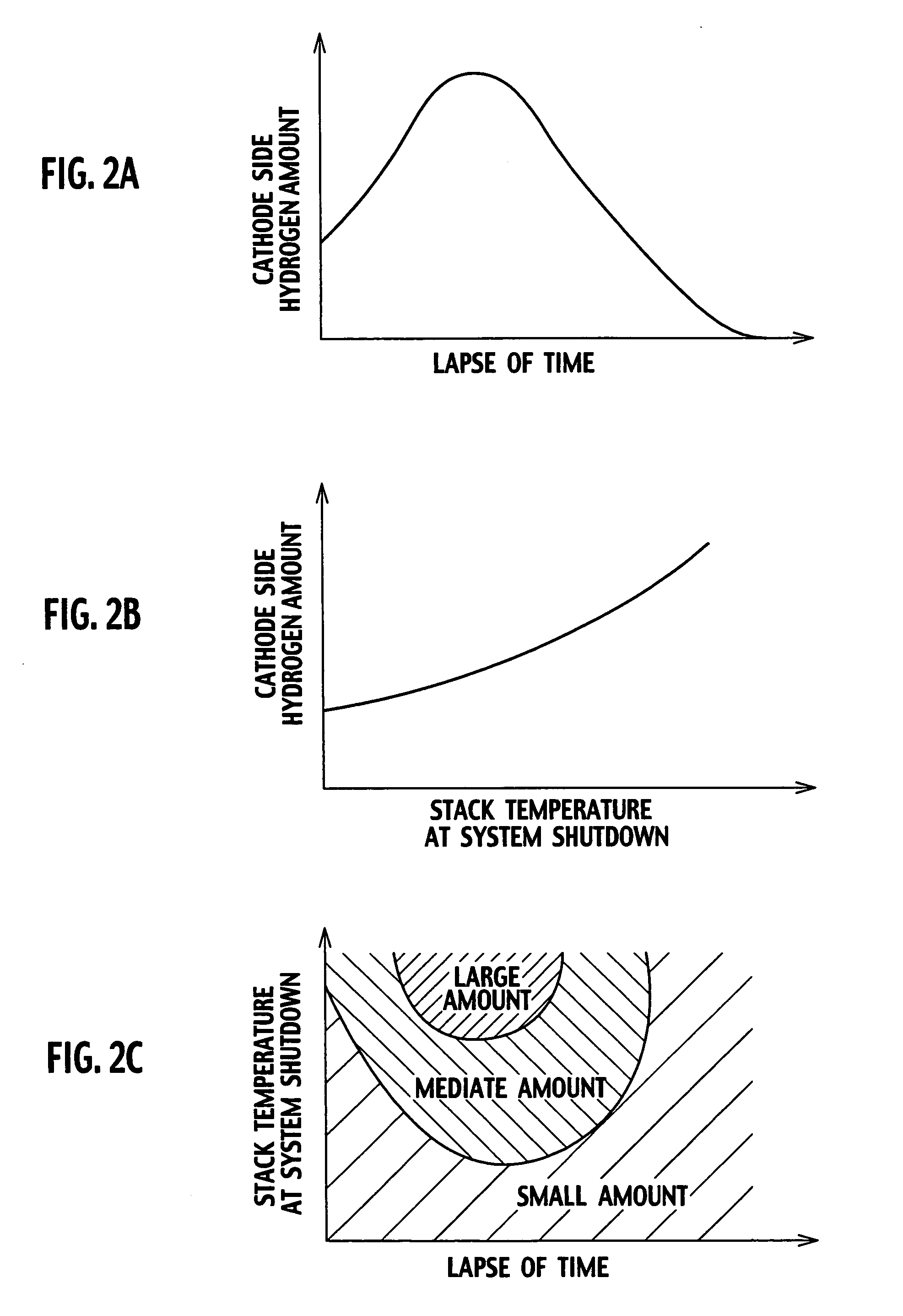Fuel cell system
- Summary
- Abstract
- Description
- Claims
- Application Information
AI Technical Summary
Benefits of technology
Problems solved by technology
Method used
Image
Examples
first embodiment
[0030] (First Embodiment)
[0031]FIG. 1 shows, in block diagram, an essential portion of a fuel cell system according to a first embodiment of the invention. This fuel cell system is configured as a power generation system for fuel cell vehicles, for example, and includes, as main components: a fuel cell stack 1 for generating electric power; and utility supply lines such as a hydrogen supply line, an air supply line, and a coolant supply line for supplying hydrogen as a gaseous fuel, air as a gaseous oxidizer, and a coolant to the fuel cell stack 1, respectively.
[0032] The fuel cell stack 1 is configured with a multiplicity of parallel-serial connected unit fuel cells (hereafter sometimes simply called “unit cells”) each acting as a power generation cell having its fuel electrode (anode) 1a to be supplied with hydrogen, oxidizer electrode (cathode) 1b to be supplied with air, and solid polymer electrolyte 1c interposed therebetween. It is noted that respective fuel electrodes 1a in ...
second embodiment
[0062] (Second Embodiment)
[0063] A fuel cell system according to a second embodiment of the invention will be explained. The fuel cell system of this embodiment has the same basic configuration as the first embodiment, and is characterized in that an increment of air flow, and an increased air flow supply time, are made variable upon conducting the system startup run. Namely, in the first embodiment, the maximum value of hydrogen has been obtained which may be present on the cathode 1b side of the fuel cell stack 1 during the system startup by previously conducting an experiment or the like, and the air supply flow increment and the increased air flow supply time have been set, as a sufficient flow rate and a time for allowing the maximum amount of air to be diluted to the preset allowable waste concentration or lower. However, in this fuel cell system of the second embodiment, the control unit 21 is configured to estimate, as required, the amount of hydrogen present on the cathode ...
PUM
 Login to View More
Login to View More Abstract
Description
Claims
Application Information
 Login to View More
Login to View More - R&D
- Intellectual Property
- Life Sciences
- Materials
- Tech Scout
- Unparalleled Data Quality
- Higher Quality Content
- 60% Fewer Hallucinations
Browse by: Latest US Patents, China's latest patents, Technical Efficacy Thesaurus, Application Domain, Technology Topic, Popular Technical Reports.
© 2025 PatSnap. All rights reserved.Legal|Privacy policy|Modern Slavery Act Transparency Statement|Sitemap|About US| Contact US: help@patsnap.com



